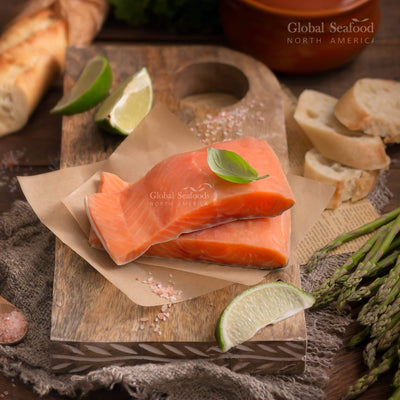Delicious Recipes to Transform Fish Skin into Gourmet Delights

Delicious Recipes to Transform Fish Skin into a Dining Delicacy
Fish skin often ends up as a discarded byproduct, yet it has the potential to shine as a culinary star. Did you know that fish skin, when properly cleaned and cooked, can become a nutrient-dense gourmet treat? As celebrated chef Thomas Keller once said:
“The most humble ingredients can be transformed into something extraordinary when handled with care.”
In this article, we explore various recipes and techniques to transform fish skin into crispy snacks and flavorful sides while highlighting its nutritional and environmental benefits.
Why Eat Fish Skin?
1. Packed with Nutrients
Fish skin is a rich source of:
- Omega-3 fatty acids: Beneficial for heart and brain health.
- Collagen: Supports skin elasticity and joint health.
- Vitamins and minerals: Including vitamin D and potassium, which are crucial for bone health and muscle function.
“Omega-3 fatty acids are essential nutrients that are critical for heart and brain health.” – Harvard T.H. Chan School of Public Health
2. A Sustainable Choice
Using fish skin reduces food waste, aligning with the principles of sustainability. As the Food and Agriculture Organization (FAO) states:
“Sustainability in seafood involves utilizing every part of the fish to minimize waste and maximize value.”
Easy Recipes for Fish Skin Delicacies
1. Baked or Pan-Fried Salmon Skin Rolls
Ingredients:
- 4 pieces of salmon skin
- 2–3 tsp light soy sauce
Instructions:
- Preparation: Clean and descale the salmon skin thoroughly.
- Shape: Fold the skin into rolls or triangles to create a juicy center.
-
Cook:
- Bake: Preheat your oven to 400°F (200°C) and bake skins in a metal pan for 45 minutes.
- Fry: Use a shallow pan with a small amount of oil to fry the skin until golden brown, then cover and cook for 15 minutes.
- Finish: Drizzle with soy sauce and serve.
“Good food doesn’t have to be complicated; it just has to be done right.” – Anthony Bourdain
2. Fish Skin Bacon
Ingredients:
- Fish skin (whiting recommended)
- Sesame oil
- Sea salt, chili flakes, black pepper
Instructions:
- Clean and Prep: Remove scales, meat, and fat from the fish skin.
- Season: Coat both sides with sesame oil and sprinkle with salt, chili flakes, and pepper.
- Bake: Preheat the oven to 325°F (160°C) and bake for 30 minutes.
- Serve: Slice into pieces for a crispy bacon alternative.
“The future of food lies in creative, sustainable solutions.” – José Andrés
3. Salmon Skin Crisps/Chips
Ingredients:
- Salmon skin
- Salt and pepper
Instructions:
- Dry and Prep: Clean and dry the salmon skin thoroughly with paper towels.
- Bake: Place skins on a baking sheet lined with parchment paper and bake at 350°F (175°C) for 3–4 hours. Leave the oven slightly ajar to speed drying.
- Crisps Option: Deep-fry dried skins at 350°F (175°C) for 1 minute until puffed.
“The simplest dishes, when crafted thoughtfully, can often become the most memorable.” – Julia Child
Health Benefits of Fish Skin
1. Heart and Brain Health
Fish skin is a natural source of omega-3 fatty acids, which reduce inflammation and improve cardiovascular health.
“Seafood is one of the best sources of omega-3s, crucial for reducing heart disease risk.” – American Heart Association
2. Rich in Protein
Fish skin contains up to 50% protein, supporting muscle repair and overall strength.
3. Boosts Skin and Joint Health
Collagen found in fish skin is essential for maintaining youthful skin and healthy joints.
“Collagen is the protein that keeps our skin firm and elastic.” – Dr. Mark Hyman
Tips for Cooking Perfect Fish Skin
- Remove Moisture: Dry the skin thoroughly for a crisp texture.
- Proper Seasoning: Use spices like chili, garlic, or sesame to enhance flavor.
- Choose the Right Fish: Salmon, whiting, and sea bass are excellent options for edible skin.
“The best cooking starts with high-quality ingredients and attention to detail.” – Alice Waters
Frequently Asked Questions (FAQs)
1. Is fish skin safe to eat?
Yes, fish skin is safe to eat when properly cleaned, descaled, and cooked.
2. Can you eat skin from all types of fish?
Most fish skin is edible, but ensure it’s from a clean source. Avoid skin from toxic species like pufferfish.
3. How do you make fish skin crispy?
Dry the skin thoroughly, season well, and bake or fry at high heat.
4. Is fish skin healthy?
Yes, fish skin is nutrient-dense, rich in omega-3s, protein, and collagen.
5. What dishes pair well with fish skin?
Crispy fish skin complements salads, rice dishes, soups, and even breakfast items like poached eggs.
Explore More Seafood Recipes
Visit our YouTube channel for more ideas: Global Seafoods YouTube Channel.
Discover premium seafood products:
Conclusion
Fish skin is a hidden gem in the culinary world. With the right preparation, it can be transformed into gourmet snacks and dishes that are as nutritious as they are delicious. As global culinary icons remind us, creativity and attention to detail can elevate the simplest ingredients into unforgettable meals.
Please don’t forget to leave a review.
Also in Recipes

How to Cook Live Manila Clams at Home: Fresh, Sweet & Delivered Overnight
Discover how to store, clean, and cook Live Manila Clams at home using simple chef techniques. Learn why these Pacific clams are perfect for pasta vongole, steaming, chowders, and more—plus how to order them fresh in a convenient 10 lb bag shipped overnight.

Boiled Crab for Brunch: The Ultimate Guide to Morning Seafood
Discover the joy of Boiled crab for brunch! Learn how to prepare seafood in the morning, its health benefits, and recipes to make your brunch memorable.









